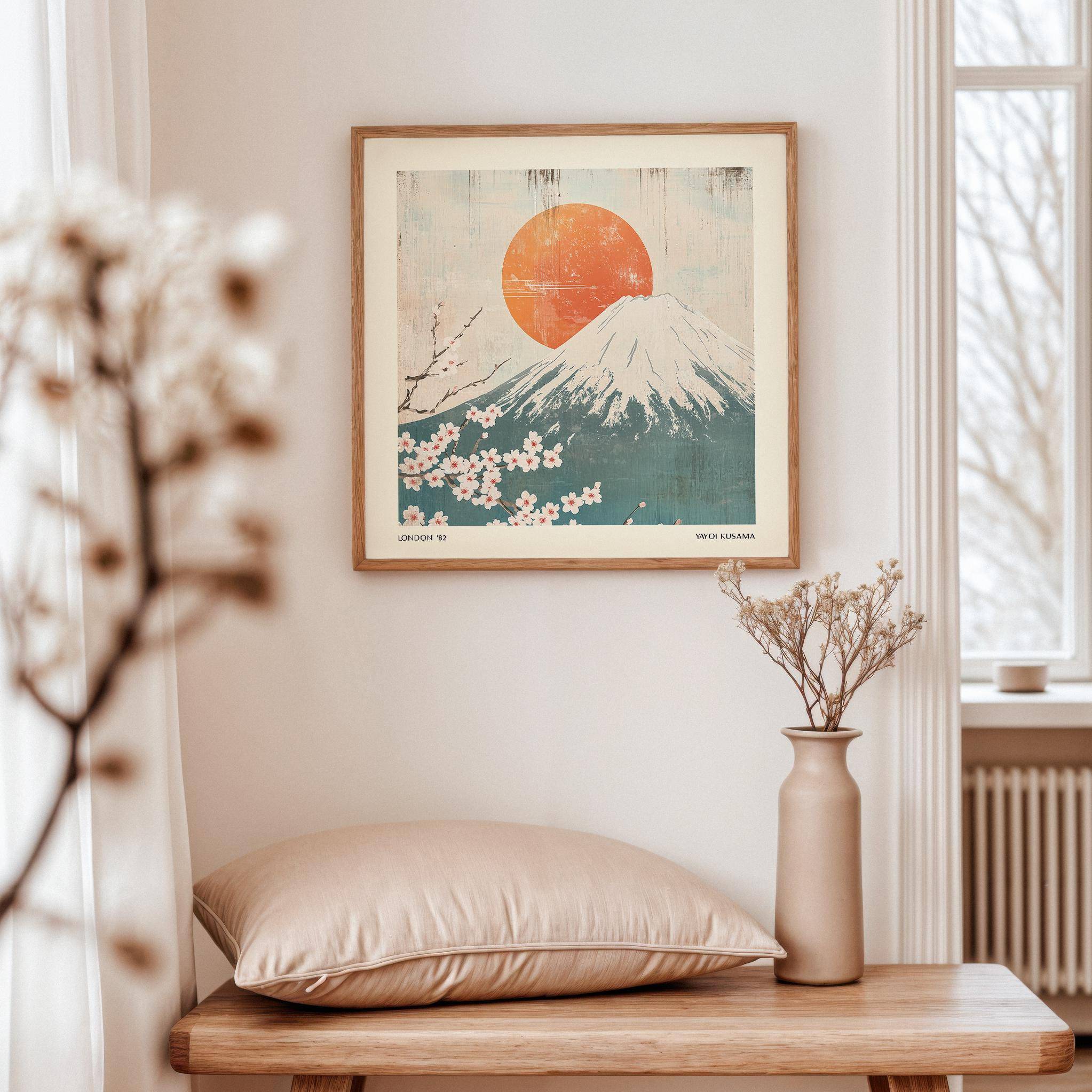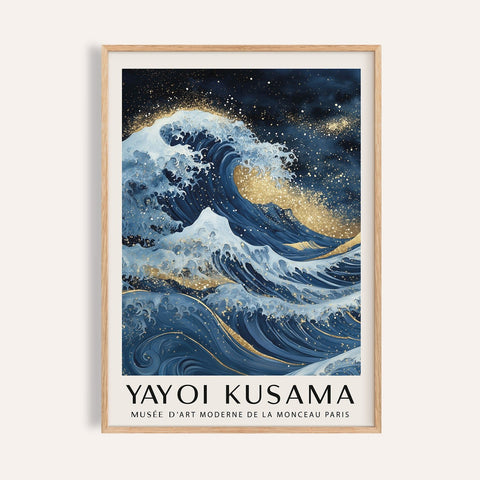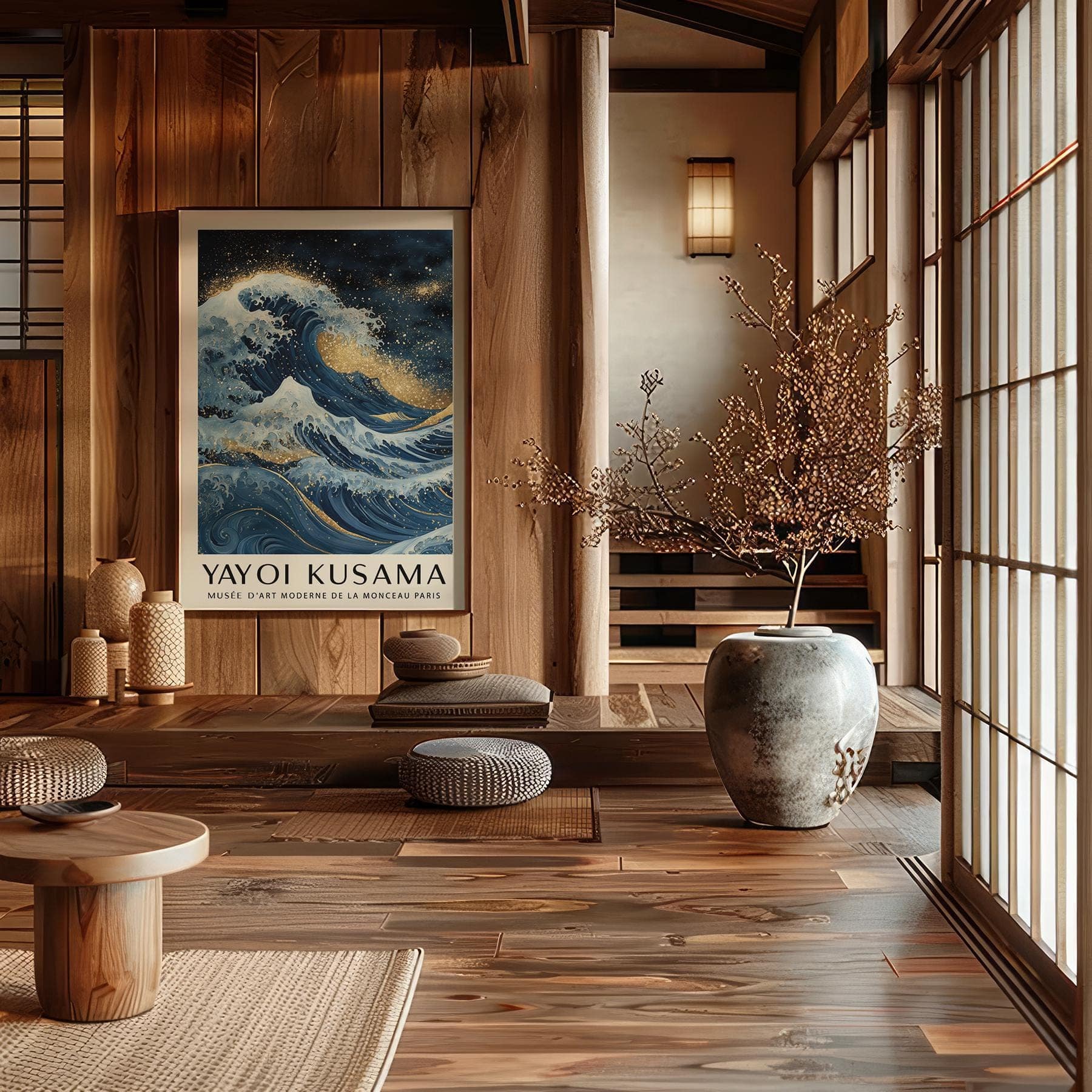Key Takeaways
-
Yayoi Kusama, known as the “Queen of Polka Dots,” is one of the most influential contemporary artists in the world.
-
Her art spans multiple mediums including painting, sculpture, installations, and fashion, often centered around repetition and the infinite.
-
Kusama’s distinct style, characterized by dots and mirrored spaces, explores themes of self-obliteration, feminism, mental health, and the cosmos. Kusama's work is prominently featured in various museums around the world, showcasing her global influence and the extensive recognition of her art.
-
From her humble beginnings in Japan to international acclaim, Kusama’s story is a testament to the power of persistence, individuality, and boundless creativity.
-
Kusama's exhibitions in various museums have had a significant global impact, highlighting her contributions to major art movements and her celebrated career.
Introduction to Yayoi Kusama’s Life
Yayoi Kusama, born on March 22, 1929, in Matsumoto, Japan, is a name that resonates powerfully in the world of modern and contemporary art. Known for her unique and immersive artistic style, Kusama’s work is instantly recognizable by its repetitive patterns of polka dots—a motif that has become synonymous with her name. Her life and career have been profoundly shaped by her experiences with hallucinations, which began in childhood and have deeply influenced her artistic themes and style.
Kusama’s journey through the art world has seen her associated with various influential movements, including pop art, minimalism, and feminist art. Her bold and innovative approach has earned her a place in major museums around the globe, such as the Museum of Modern Art, the Los Angeles County Museum of Art, and the Tate Modern. Despite the challenges she faced, Kusama’s relentless creativity and unique vision have cemented her status as one of the most influential contemporary artists of our time.

Who Is Yayoi Kusama?
Yayoi Kusama is not just a name in the art world; she is a global phenomenon. Born in 1929 in Matsumoto, Japan, Kusama has spent over seven decades pushing the boundaries of contemporary art. As an avant-garde artist, she played an influential role in the New York art scene during the mid-1960s, with groundbreaking performances and exhibitions that defied traditional artistic boundaries. Today, she is revered not only for her bold aesthetic—most famously, her use of polka dots—but also for her deeply philosophical and psychological approach to art. Her signature works span avant-garde performance art, immersive installations, and infinity mirror rooms that continue to mesmerize audiences worldwide. In 1993, Kusama represented Japan at the Venice Biennale, a significant milestone that contributed to her international recognition and critical acclaim.
The Origins of a Visionary
Kusama’s path was anything but ordinary. As a child in a conservative family, she struggled with hallucinations and mental health challenges—experiences that would go on to shape her creative worldview. She began painting at the age of ten, inspired by her visions of patterns and repeating shapes. During this time, she also produced significant drawings, including a notable drawing of her mother. The polka dot, which would become her signature motif, emerged from these early experiences. To Kusama, dots represent infinity: they are both microscopic and cosmic.
Despite challenges from her parents, Kusama was determined to pursue her passion for art. She eventually enrolled in art school to study painting, marking an important step in her artistic career and the development of her unique style.
By the 1950s, she had left Japan for New York, armed with nothing but a few paintings and an unshakable determination to become an artist. What followed was a period of intense creativity and radical experimentation that placed her at the heart of the avant-garde art scene.

The Polka Dot Revolution
Yayoi Kusama’s dot-filled creations aren’t simply decorative; they’re deeply conceptual. She describes her art as a means of “self-obliteration”—a way to dissolve the ego and become one with the universe. Her famous quote, “Our earth is only one polka dot among a million stars in the cosmos,” encapsulates this idea beautifully.
From canvases covered in endless dots to entire rooms transformed into immersive experiences, Kusama uses repetition and pattern to invite viewers into her world. Her Infinity Net paintings, composed of thousands of small arcs, showcase her meditative approach, while installations like the infinity mirrored room create spatial illusions that evoke the infinite. The infinity mirrored room, a unique installation by Kusama, immerses visitors in an endless space of flashing colored LED lights within mirrored walls, blurring the boundaries between the individual and the infinite universe.
These installations create an overwhelming sense of infinite space, contributing to themes of life, death, and the obliteration of self.
Artistic Style and Themes
Yayoi Kusama’s artistic style is a vibrant tapestry of bold colors, intricate patterns, and dynamic shapes, with polka dots being a signature element that threads through much of her work. These dots are not merely decorative; they are a profound representation of her experiences with hallucinations and her exploration of the infinite. Kusama’s iconic Infinity Mirror Rooms exemplify this, creating an immersive experience that envelops the viewer in a seemingly endless expanse of reflections and light.
Her work often incorporates elements of nature, such as flowers and pumpkins, which are depicted in her paintings and sculptures with a whimsical yet profound touch. The use of mirrors in her installations adds an extra layer of depth and complexity, transforming physical spaces into infinite realms that challenge the viewer’s perception of reality. Through her art, Kusama invites us to step into her world, where the boundaries between the self and the universe blur, creating a mesmerizing and thought-provoking experience.
Mental Health and the Art of Healing
Kusama has lived voluntarily in a psychiatric hospital in Tokyo since the 1970s, a decision she made to manage her mental health while continuing to create. Her studio is located across the street, allowing her to work daily. Her honesty about her mental illness and how it fuels her art makes her an icon of resilience and self-acceptance.
A major survey of her work, titled 'Infinity Mirrors,' was showcased across multiple prominent museums including the Hirshhorn Museum and Sculpture Garden and the Seattle Art Museum from 2017 to 2019. She channels hallucinations and anxiety into her art, transforming pain into something beautiful and immersive. Despite her mental health challenges, Kusama remains committed to create art across various forms, including sculpture, painting, and installation. For Kusama, art is not only a form of self-expression—it is therapy, salvation, and survival.
Yayoi Kusama and the Feminist Movement
Long before the art world recognized female artists on equal footing with men, Kusama was making waves. In the 1960s, she organized provocative happenings in New York City, often featuring nude performances that challenged conservative norms and male-dominated institutions.
Though often overlooked in her early career, her influence on feminist art and performance art is undeniable. Kusama’s work critiques gender, power, and the female experience in subtle but radical ways, creating space for future generations of women artists. She has been recognized as one of the world's most influential people, underscoring her impactful contributions to contemporary art.
In 1993, Kusama made history as the first woman to represent Japan at the Venice Biennale, showcasing her influential role in the art world and her innovative contributions over six decades.

Iconic Works and Installations
Infinity Mirror Rooms
Arguably her most famous installations, the Infinity Mirror Rooms offer an otherworldly experience. Covered in reflective surfaces and dotted objects, these rooms play with light and perspective to create a sensation of endlessness. The 'Dancing Lights That Flew Up To The Universe' exhibit, in particular, showcases Kusama's signature use of light to create a captivating visual experience that engages viewers in a multisensory exploration of infinity and connection to the cosmos. Each visitor steps into a galaxy of reflections, becoming part of the artwork.
The Pérez Art Museum Miami recently showcased the exhibition 'Yayoi Kusama: LOVE IS CALLING,' highlighting the accessibility and significance of Kusama's influential career in South Florida.
Pumpkin Sculptures
Another Kusama trademark: the humble pumpkin. These cheerful, polka-dotted gourds have become symbolic of her childhood and comfort. She describes pumpkins as “humble and amusing,” yet their stylized repetition transforms them into iconic, larger-than-life sculptures. Kusama's pumpkin sculptures also embody the concept of 'cosmic nature,' bridging microscopic and macroscopic universes and evoking themes that transcend traditional boundaries.
A major retrospective exhibition of Yayoi Kusama's work, featuring over 100 objects and large-scale mirror room installations, was showcased at the Helsinki Art Museum. This exhibition highlighted elements of Kusama's innovative artistic practice and included some early works previously unseen by the public.
Obliteration Room
First appearing in Australia in 2002, the Obliteration Room is a completely white domestic interior where visitors are given colorful dot stickers to place wherever they like. This immersive experience echoes Kusama's concept of 'phallis field,' where the notion of self-obliteration through polka dots allows participants to feel a connection to the universe and their environment. Over time, the blank space is transformed into a vibrant explosion of color and chaos—an evolving, collaborative artwork.
Notable exhibitions of Kusama's work, including the Obliteration Room, have been held at prestigious institutions like the Centre Pompidou, highlighting its significance in the world of modern and contemporary art.
Eternal Soul and Inspiration
At the heart of Yayoi Kusama’s art lies a deeply personal and emotional wellspring of inspiration. Her use of polka dots, for instance, is a direct reflection of her own experiences with hallucinations, which have been a recurring theme throughout her life. These dots, along with her repetitive patterns and shapes, symbolize her fascination with the concept of infinity and the self—a theme that permeates much of her work.
Kusama’s artistic journey is also a testament to her resilience and her ability to transform personal struggles into creative expression. The title of her monumental exhibition, “Infinity Mirrors,” encapsulates her desire to create an immersive experience that transports viewers to a different realm, one where the infinite and the eternal are palpable. As Kusama herself has said, “My art is a way to express my mental problems, and I have found relief in creating art.” Through her work, she not only finds solace but also offers viewers a glimpse into her unique perspective on the world, making her art a powerful medium of connection and understanding.
Kusama's Fashion and Pop Culture Legacy
Yayoi Kusama’s impact extends beyond galleries and into fashion, design, and even pop culture. She has collaborated with major brands like Louis Vuitton, designing high-fashion collections featuring her iconic dots. Her unique style, often including bright wigs and polka-dotted outfits, is instantly recognizable and makes her a walking artwork.
Kusama has had several solo shows at David Zwirner, where her exhibitions have showcased her unique art style and cemented her position as one of the most successful living artists. She’s also been referenced in music videos, literature, and design, influencing creators across disciplines. Her appeal lies in her authenticity—she’s never followed trends; she’s made them.
Additionally, her collaborations with Victoria Miro have highlighted her profound impact on contemporary art, with exhibitions that invite viewers into her unique artistic vision.
Yayoi Kusama at Laboo Studio
At Laboo Studio, we celebrate artists who transform emotion into imagery, and Yayoi Kusama exemplifies that ideal. Her fusion of minimalism, repetition, and maximal emotional impact speaks to the essence of modern art and has significantly influenced international contemporary arts through her global exhibitions and retrospectives.
Kusama's work has been showcased in numerous prestigious venues, including the National Museum, highlighting her global recognition and the importance of these institutions in preserving her artistic legacy.
Inspired by Kusama? Explore our Modern Art Prints or Japanese Wall Art collections. While we don’t feature official Kusama pieces, our curated prints echo the spirit of her artistry—bold, thought-provoking, and joyfully immersive.
For those drawn to dot patterns, check out our Polka Dot Art Prints—perfect for adding a touch of Kusama-inspired flair to any interior.









































